Exploring Norfolk in a moke
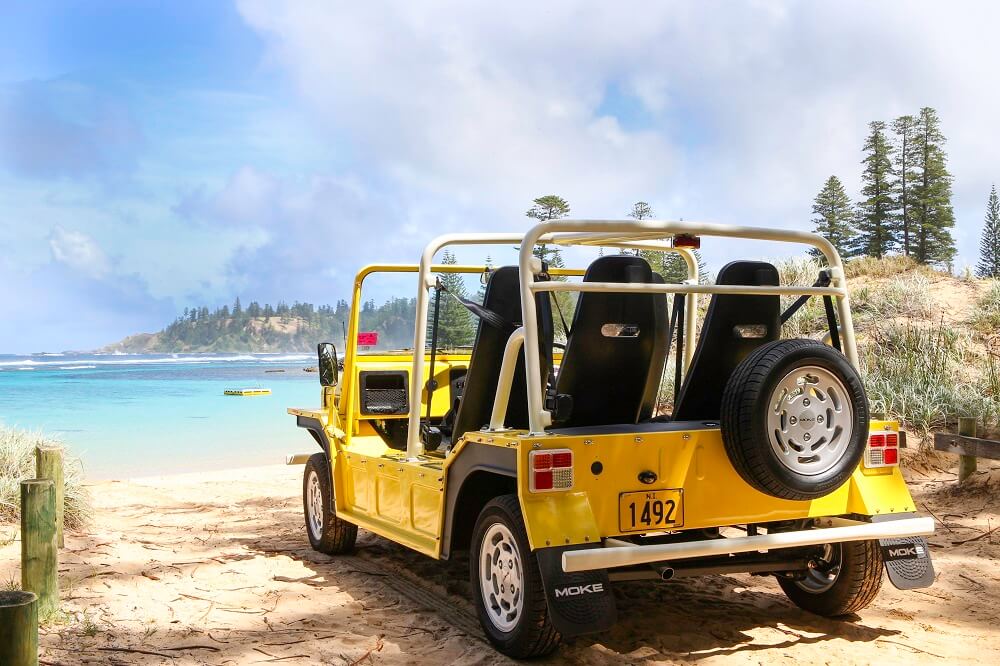
Who would think doing a ‘bread’ run could make history?
When Lieutenant William Bligh boarded HMS Bounty in 1787 to transport breadfruit trees from Tahiti to the West Indies – that’s exactly what happened.
To cut the sea saga short, the Bounty’s breadfruit were never delivered. Half of the Bounty crew thought the Tahitian women were much more appealing than more time at sea and Captain Bligh was loaded into the ship’s launch and ‘let go’.
And so began one of the world’s most loved nautical tales, Mutiny on the Bounty.
It’s a story that is a big part of Norfolk Island history – 70% of the population are descendants of those Bounty mutineers
A two-and-a-half hour flight from Brisbane or Sydney, Norfolk is an island that takes your breath away before you’ve even landed.
It’s tiny. A speck in the South Pacific Ocean – just five kilometres by eight, smothered in Norfolk Pines (of course) and barricaded from the sea by formidable cliffs interrupted, sparingly, by stunning bays.
Looking down, you may wonder how you will fill in the week you’ve booked. But, for an island so small, there is a bounty of things to do.
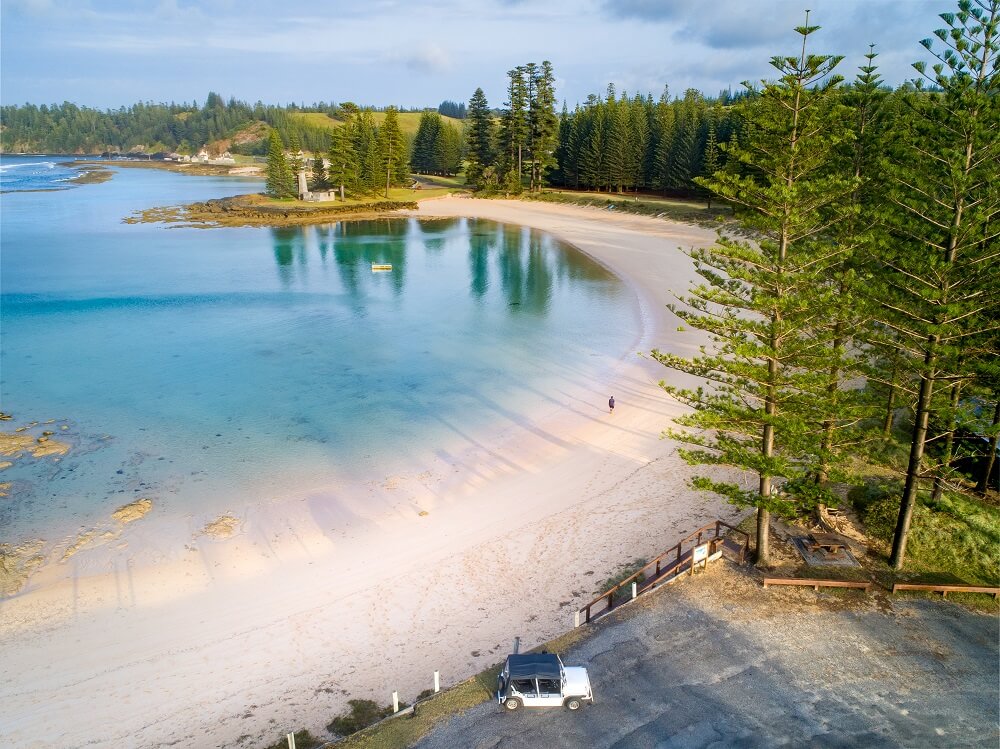
Explore Kingston
Once known as ‘Hell in Paradise’, Kingston was the most dreaded penal settlement in the Southern Hemisphere. The worst of the convicts from New South Wales were sent there between 1788 –1814 and conditions were brutal.
Today, Kingston is a UNESCO-listed World Heritage site. While you’re free to wander the ruins, it’s only on a guided tour that you can hear the gory stories. And, if the tales don’t horrify you by day, try them at night.
The Lantern-Lit Ghost Tour is terrifyingly good. Whether you believe in ghosts or not, the walk through Norfolk’s cemetery will have you second-guessing every shadow.
Steel your nerves for what is said to be Australia’s most haunted house – No. 9 Quality Row – on the main street of Kingston. This Georgian cottage, built in 1839 for the Royal Engineer, has been perfectly restored. But it’s the servant’s quarters out the back where numerous visitors have observed, even photographed, some spooky “additions”.
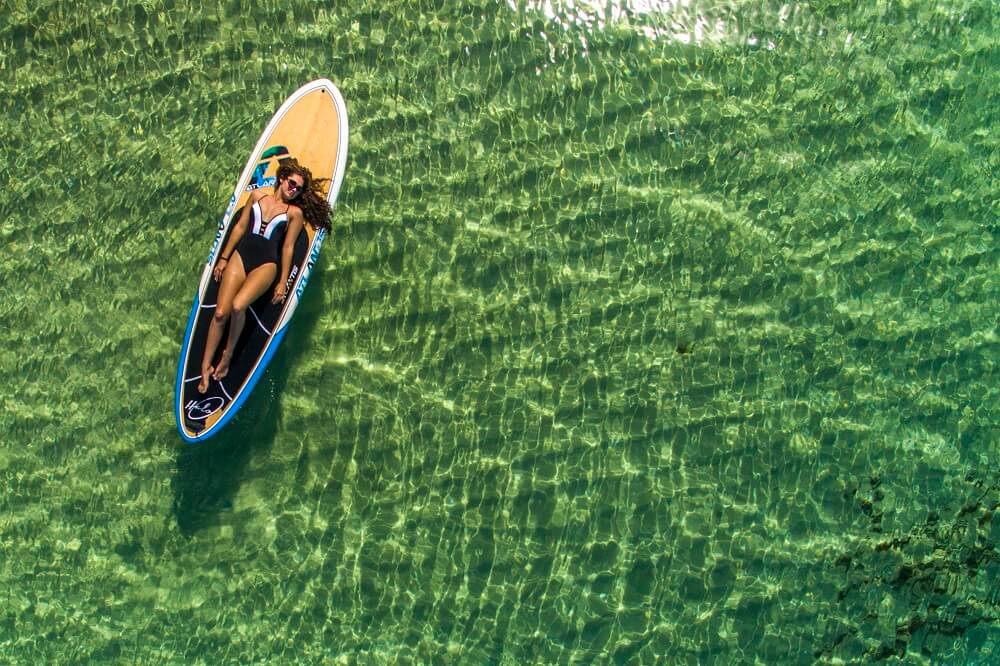
Hire a moke
You’re smiling before you even start the engine of a mini moke. These fun cars, with the roof off and sides down, are the best way to explore Norfolk’s 80km of winding, hilly roads.
With no traffic lights and only one roundabout, Norfolk’s biggest road hazard is cattle. Hundreds of cows roam freely across the island and they have right of way. They’ll moo for you, but definitely won’t mooooove for you!
And there is an unofficial road rule that you need to know about – it’s called the Norfolk Wave.
Drivers, all you need do is raise your index finger each time you pass a car and that’s saying ‘Watawieh’ (hello) in the local Norf’k language.
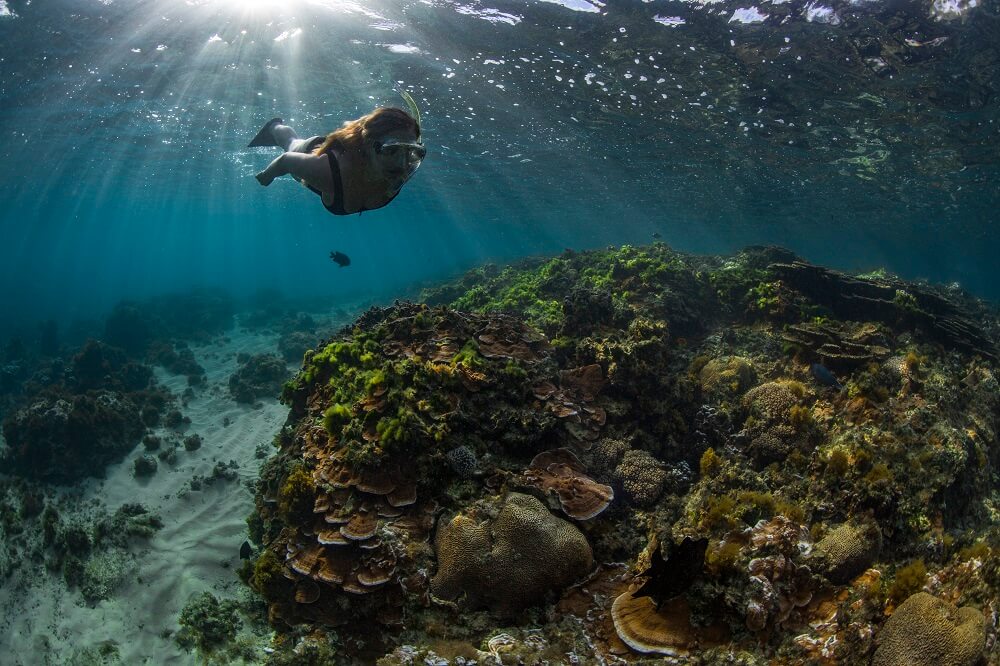
Swim in heaven
Emily Bay is regularly voted one of Australia’s most beautiful beaches. Protected by reef, the lagoon is an aquarium of coral gardens, tropical fish, a resident turtle – all just a 30 second snorkel off the beach.
If you want to stay dry, Bounty descendant George Parsons has a glass bottom boat to view the reef. And, if the local Outrigger Club is there, say ‘watawieh’ and they’ll take you for a paddle in their traditional boats – for free.
Anson Bay is Norfolk’s most-spectacular beach and one of the most remote stretches of sand in the world. It’s a five-minute walk down a winding grassed path – but be cautious about swimming. Even if the waves look inviting the rips can be treacherous. If you’re not confident play it safe. Cool your feet in a rockpool, take some awesome photos and enjoy the walk back up to the top.
Trek to the top of Phillip Island. Nicknamed the ‘Uluru of the Pacific’ because of its stunning red and purple hues, this is a place very few tourists get to visit.
Six kilometres offshore, Phillip Island is the little sibling of Norfolk and is a wonderful conservation story.
Ravaged by pigs, goats and rabbits during Norfolk’s years as a penal settlement (they were put there as hunting targets and a food source), the island was eventually stripped bare of vegetation.
Now a National Park, Phillip Island has many rare and endangered plants and is a breeding ground for sea birds including masked boobies, black-winged petrels, sooty terns and black noddies.
You need to be adventurous for this trip. Even in calm seas the landing is a surge-timed leap from a boat onto slippery rocks
(Tip: wear some old socks for grip) and it’s a challenging climb to the top via rope ladders and wooden steps, but worth the effort.
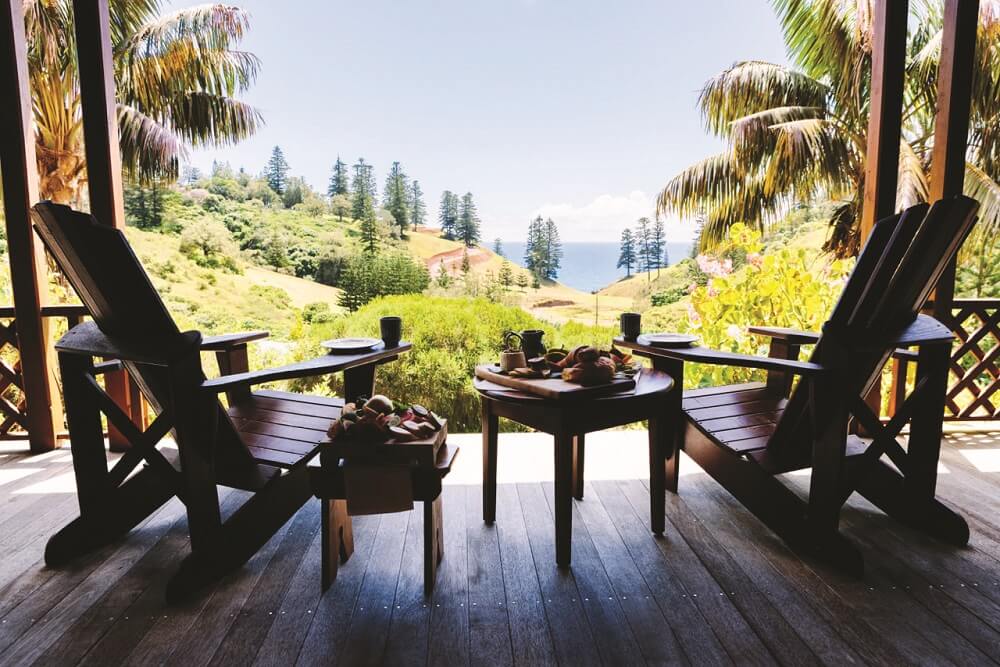
Sleep in luxury
Norfolk has a bounty of accommodation, but Tintoela Homestead and Cottages is a favourite of regular visitors to the island. The hand-crafted timber retreat sleeps 14, has magnificent ocean views, tropical gardens and is just five minutes’ drive to the main village of Burnt Pine. And if you’re wondering what Tintoela means, it’s Norfolk for sweetheart. Sweet.
Talk to RACQ Travel to plan your Norfolk Island holiday on 1300 888 449.
Story by Susan Elliott, photos by Norfolk Island Tourism.
Related topics
Things to note
The information in this article has been prepared for general information purposes only and is not intended as legal advice or specific advice to any particular person. Any advice contained in the document is general advice, not intended as legal advice or professional advice and does not take into account any person’s particular circumstances. Before acting on anything based on this advice you should consider its appropriateness to you, having regard to your objectives and needs.
Insurance Products (excluding Travel Insurance) are issued by RACQ Insurance Limited ABN 50 009 704 152 (RACQI) and arranged by its agent, RACQ Distribution Services Pty Ltd (RDS) ABN 35 116 361 650, AFSL 567130 and RDS' authorised representatives (including RACQ Operations Pty Ltd ABN 80 009 663 414, AR No. 234978 (RACQO). Conditions, limits and exclusions apply. RDS and RACQO are in the RACQ group of companies. One of the companies in the RACQ group of companies has a minority shareholding in RACQI.
RDS and RACQO have not taken your personal objectives, circumstances or needs into account when preparing advice regarding insurance products and you will need to consider whether the advice is appropriate for you. Read the Product Disclosure Statement (PDS) and any applicable Supplementary PDS before making a purchase decision on this product. You can also access our Target Market Determinations on this website. RDS receives a commission from RACQI for the policies it arranges. RACQO receives fees paid for services it provides to RDS. Further details about remuneration are available on request prior to purchasing.
Banking and loan products issued by Members Banking Group Limited ABN 83 087 651 054 AFSL/Australian credit licence 241195 trading as RACQ Bank. Terms, conditions, fees, charges and lending policies apply. This is general advice only and may not be right for you. This information does not take your personal objectives, circumstances or needs into account. Read the disclosure documents for your selected product or service, including the Financial Services Guide and the Terms and Conditions, and consider if appropriate for you before deciding.
Except for RACQ Bank, any RACQ entity referred to on this page is not an authorised deposit-taking institution for the purposes of the Banking Act 1959 (Cth). That entity’s obligations do not represent deposits or other liabilities of RACQ Bank. RACQ Bank does not guarantee or otherwise provide assurance in respect of the obligations of that entity, unless noted otherwise.
RACQ Bank subscribes to the Customer Owned Banking Code of Practice which establishes higher standards than the law requires. The Code reflects modern consumer expectations and developments in approaches to issues such as consumer vulnerability, guarantors, and supporting customers through financial hardship. Please read our Customer Owned Banking Code of Practice page for more information.
RACQ Operations Pty Ltd (ABN 80 009 663 414 AR 000234978) and Members Travel Group Pty Ltd (ABN 45 144 538 803 AR 000432492) are acting as an Authorised Representative of the issuer of the insurance, Tokio Marine & Nichido Fire Insurance Co., Ltd. (ABN 80 000 438 291 AFSL 246 548). Any advice set out above is general in nature only, and does not take into account your objectives, financial situation or needs. Before purchasing any travel products, please consider the RACQ Travel Insurance Product Disclosure Statement (PDS) and the Target Market Determinations (TMDs) that apply to these products. Whilst the PDS outlines the Terms and Conditions of these products, the TMDs outline the intended class of customers that comprise the target market for these travel products. This will allow you to consider which products best suit your objectives, financial situation and needs and consider the products appropriateness to your personal circumstances. TMDs also outline matters involving the distribution and the review of these products. The PDS, Supplementary PDS and TMDs for each travel product can be found here.